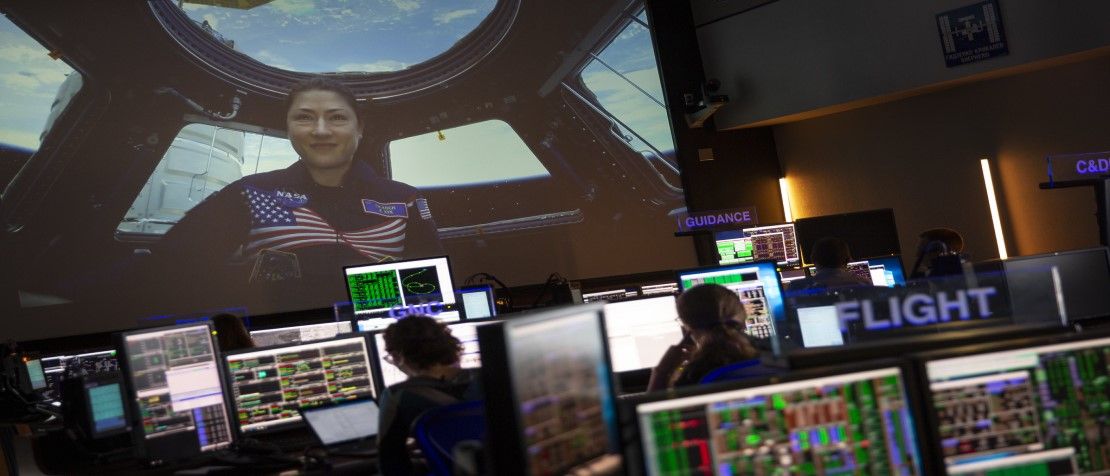
What do space science radiocommunications have to do with me?
A remote satellite collects radio signatures while its antennas stare passively at Earth. A space probe’s active radar scans for changes in soil temperature and moisture. Safe to say, neither scenario was a usual topic of everyday, pre-pandemic conversation.
But, worth talking about now is how these same radiocommunication satellites are emblematic of the contributions science has and will continue to make to my benefit and yours, and how they may even help mitigate the effects of the pandemic itself.
Despite COVID-19, carefully allocated radio frequency spectrum and the ITU World Radiocommunication Conference (WRC) treaty agreements have kept space science radiocommunication activities operating uninterrupted. These radio-frequency spectra enable active and passive remote sensing technologies and meteorology missions to return continuous and incremental data on changes in Earth systems. Adjusting to a new work environment NASA and its partner agencies were quick to adjust their work environments and mission pace to the new normal. Aboard the International Space Station, travel restrictions and stay-at-home orders have been a way of life for scores of astronauts and cosmonauts who’ve lived and worked there since the Expedition One crew launched on 31 October 2000. Not to mention those of us back on the ground, who continue to work remotely over radio frequencies to command and control the spacecraft, monitor equipment, manage flight experiments, and communicate with and maintain the safety of our space-faring colleagues.
Accessible data for tracking climate change and mitigating threats
These radio-frequency spectra enable active and passive remote-sensing technologies and meteorology missions to return continuous and incremental data on changes in Earth systems. In light of the pandemic, NASA, ESA (European Space Agency) and JAXA (Japan Aerospace Exploration Agency) have used their collective, Earth-observing satellite power to create a publicly accessible COVID-19 Earth Observation Dashboard.
Here, selective satellite data has tracked changes in air and water quality, climate change, economic activity and agriculture since the start of the pandemic. Among recent observations: reductions in agricultural production from disrupted supply chains, and improved air and water quality due to reduced human activities (industry and stay-at-home orders). All of these data can help worldwide business and government leaders rejuvenate the global economy. Additional data for understanding and mitigating threats to our safety continue to be available at NASA’s Earth Observing System Data and Information System (EOSDIS). EOSDIS provides global users with direct access to all science captured by NASA satellites. These data can warn of dynamic, potentially deadly weather patterns, precipitation, flood and fire risks, as well as, among others, monitor long-term crop growth and health.
Improving lives with space asset spinoffs
Of course, our space assets continue to spawn so-called spinoffs: items developed for use by astronauts in space that now improve lives here on terra firma (e.g memory foam, scratch-resistant sunglasses, cordless vacuums, etc.).
One recent spinoff that made deadlines was rolled out in the midst of COVID-19’s first wave last spring.
A ventilator specifically for coronavirus patients was designed and demonstrated in just 37 days by engineers at NASA’s Jet Propulsion Laboratory (JPL).
After securing an emergency use authorization from the Food and Drug Administration (FDA), the JPL team made its design available to select manufacturers at zero cost.
Scientific and technological advancement — a ray of hope
Our minds tell us that, in the long term, ingenuity and committed investment in research and development will continue to fuel advancements in science and technology. In turn, the knowledge that these advancements will improve daily life on Earth, as well as further pave the way for human space exploration, give us hope and inspiration for humankind’s future.
However, through the lens of this pandemic, near-term hope and inspiration may seem in short supply.
Let’s remember that our continued space-science activities and satellite capabilities are working to maintain and restore everyday necessities that we all likely have taken for granted until now.
In and of itself, this recognition should provide us with enough hope and inspiration as a bright light at the end of this longer-than-expected tunnel.
Header image: NASA astronaut Christina Koch is seen onboard the International Space Station from the Blue Flight Control Room, Tuesday, July 9, 2019 at NASA’s Johnson Space Center in Houston, Texas. Credit: Bill Ingalls (NASA) via Flickr
